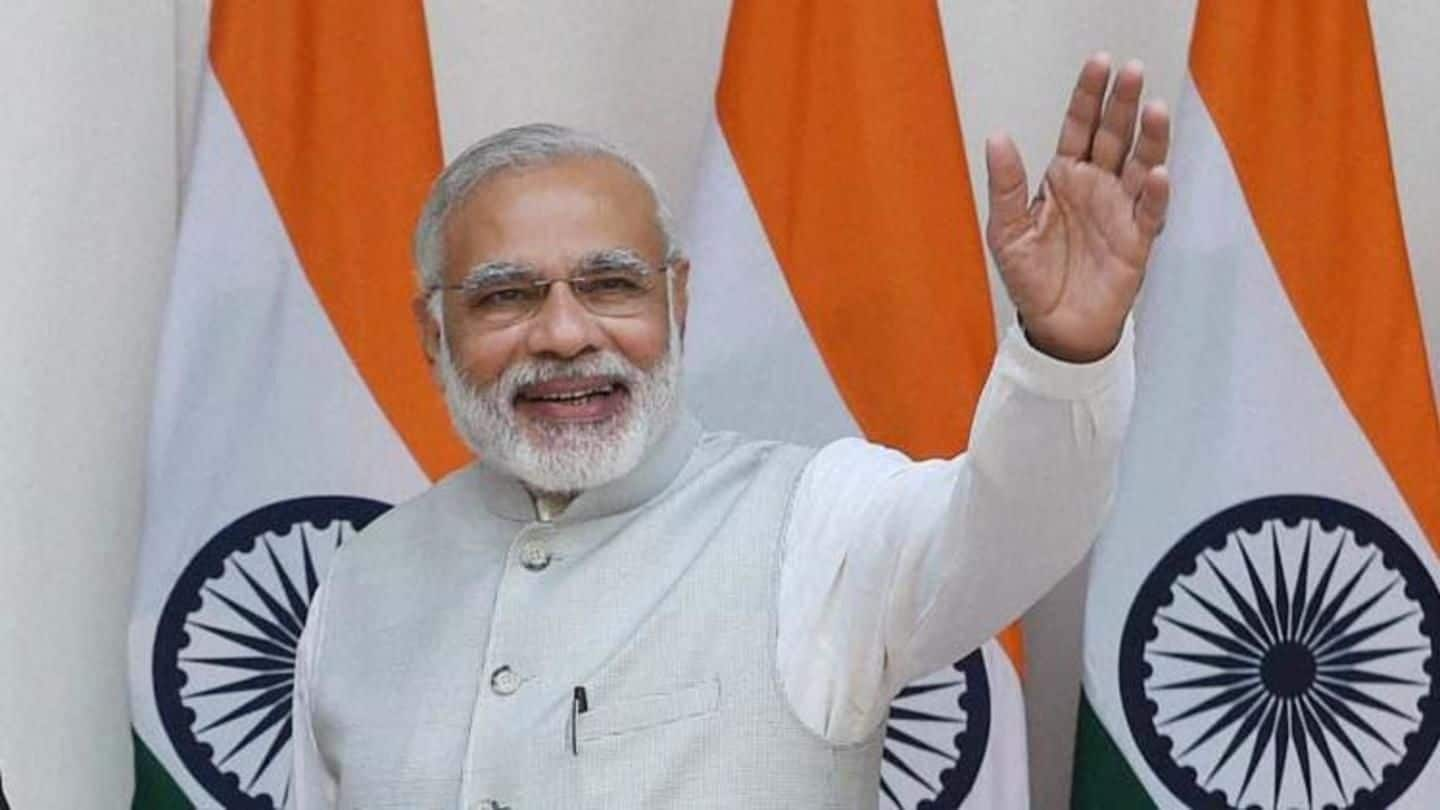
#PolicyExplainer: All you need to know about Ayushman Bharat scheme
What's the story
The flagship Ayushman Bharat-Pradhan Mantri Jan Arogya Yojana (AB-PMJAY) is being inaugurated today by Prime Minister Narendra Modi in Jharkhand.
The scheme, which aims to cover 50 crore Indians, is being billed as the "world's largest government funded healthcare program", and is expected to solve, at least to a considerable extent, issues of healthcare expenditure in the country.
Here's all about the scheme.
Data
The health expenditure situation in India
As per the 71st round of the NSSO survey, conducted in June 2014, only 14.1% of rural households, and 18% of urban households have access to health insurance/assurance. Additionally, 24% of rural households, and 18% of the urban population meet their health expenses through borrowing.
AB-PMJAY
AB-PMJAY is a two-part program
The Ayushman Bharat-Pradhan Mantri Jan Arogya Yojana (AB-PMJAY) is a two part program.
The first, Ayushman Bharat (AB), seeks to bring healthcare closer to people's homes by constructing 150,000 Health and Wellness Centres (HWCs) across India.
The second part, Pradhan Mantri Jan Arogya Yojana (PMJAY) seeks to provide comprehensive health insurance to vulnerable and poor families for secondary and tertiary healthcare.
PMJAY
The basics of of PMJAY
Under PMJAY, beneficiary families will be entitled up to an annual health insurance of Rs. 5 lakh for secondary and tertiary hospitalization.
This health insurance will be available for 1,350 procedures covering pre and post hospitalization, diagnostics, medicines, at both private and public hospitals.
No cap has been set on family size and age to ensure that no one gets left out.
Hospitals
Which hospitals will support the scheme?
Healthcare services will be extended to beneficiary families via a network of Empanelled Health Care Providers including both private and public hospitals.
So far, the Government has received 15,686 applications from hospitals, of which roughly half are private hospitals.
Of these, 8,735 hospitals have already been empanelled.
However, the pilot will start with over 1,280 hospitals, both public and private.
Beneficiaries
Who are the eligible beneficiaries of PMJAY?
The scheme will target the rural poor primarily, and entitlements will be based on the five deprivation categories in the latest Socio-Economic Caste Census (SECC).
For the urban poor, 11 occupational categories will determine families' entitlements.
It's estimated that 8.03 crore rural families, and 2.33 crore urban families will be the scheme's beneficiaries - that's around 50 crore people!
Information
You can avail the scheme by presenting identification
To avail the benefits under the scheme, families would need to establish their identities via any recognized identity card, be it Aadhaar, Voter ID, or ration card. Notably, Aadhaar isn't mandatory for availing the scheme.
Enrolment
Enrolment can be done online or offline
The National Health Agency (NHA), the body responsible for implementing the scheme, has launched a website and a helpline number to help prospective beneficiaries.
One can head to mera.pmjay.gov.in, or call the helpline (14555) to check their enrolment status.
Enrolment simply involves verifying your mobile number via an OTP, and completing the KYC online.
Empanelled hospitals will have 'Ayushman Mitra' offline help desks too.
Information
The scheme will not be available in certain states
As of now, as many as 31 states and Union Territories (UT) have signed MoUs with the Centre about implementing AB-PMJAY, and will do so in the coming months. The scheme won't be available in non-participating states which include Telangana, Odisha, Delhi, Kerala and Punjab.
Editor's note
PMJAY can help millions, but implementation is the key
With a massive 62% of health expenditure in India coming out of people's pockets, the scale and scope of PMJAY in providing health insurance could go a long way to help rural and urban poor, in India, get access to quality healthcare.
However, implementation is the key, and the Government should be wary of last mile hurdles jeopardizing the scheme.